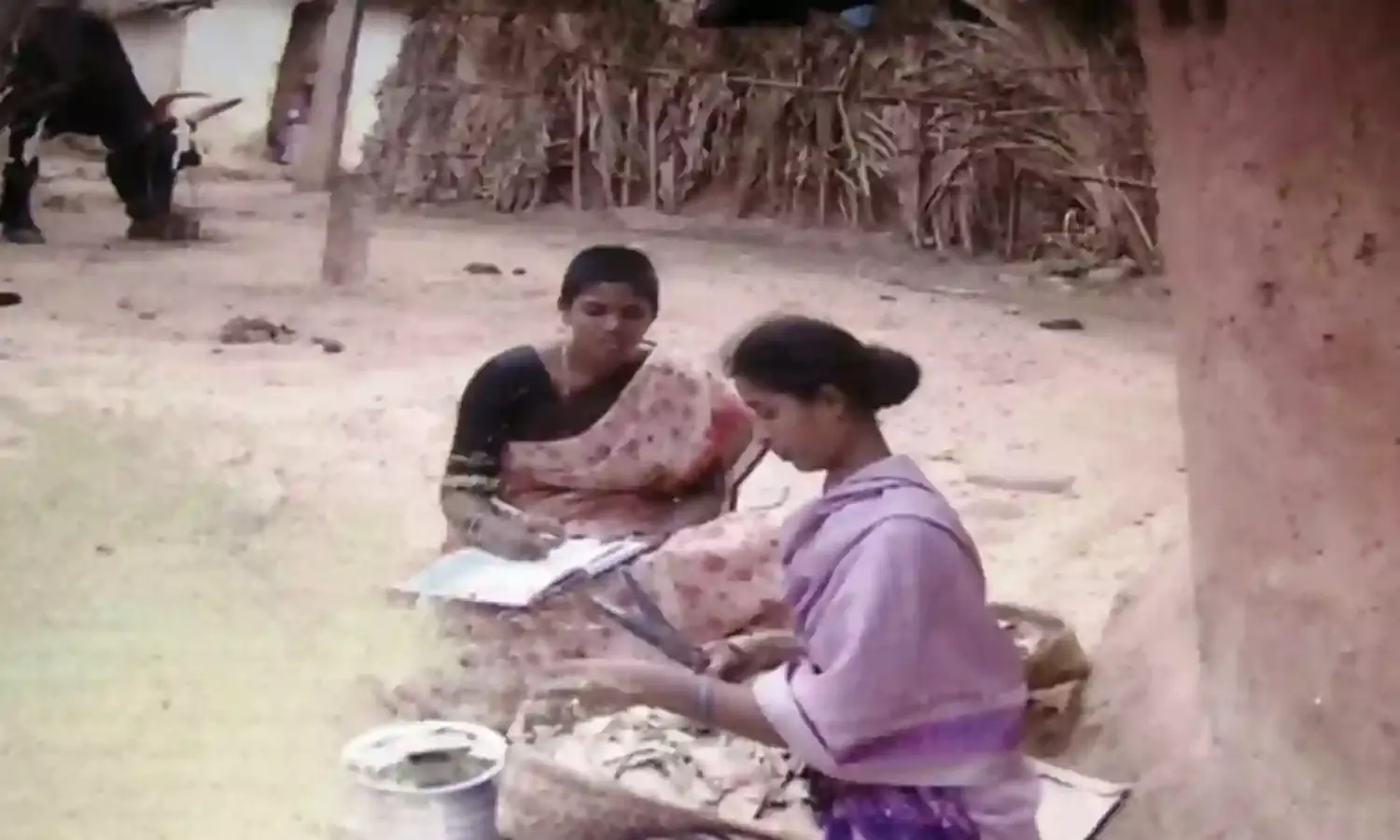The Navodayam Experiment - For Women, By Women
Community magazine from Chittoor;

Navodayam was born in the form of a newsletter with the purpose of putting into action ‘Information for Empowerment’. The four major aims of Navodayam are: to give ‘voice’ to the rural and poor women; place rural women in charge of news coverage; reach information out to touch, influence and inspire the rural poor, and adapt journalism so that it becomes a tool to empower rural, poor, oppressed and uneducated girls and women. In the process, the six women who began the newsletter have been able to redefine their own lives, and look at their involvement with it as a great learning process.
‘Navodayam’ blends ‘nava’, meaning new and ‘udayam’, meaning dawn. This community magazine that realized the dreams of hundreds of women of Chittoor District in Andhra Pradesh. It is edited, published, marketed and distributed by women, for women.
These women do not come from sophisticated, affluent and urban backgrounds. Nor are they backed by university degrees. None of them have ever been to a journalism school. Most of them cannot speak English, let alone read or write it. But these have not been hurdles for their growth. They have taken this on as a learning experience, as a commitment and as a career. The Navodayam project began as part of the World Bank’s Poverty Alleviation Programme.
Its newsletter, aimed at empowering women through communication, called Navodayam, began on August 15, 2001. Its major aim is to take the newspaper to the village. Six poor and semi-educated women living in Chittoor district in Tirupati gathered strength to write, edit, lay out, print, publish and distribute the newspaper in Telugu. Picking and laying out photographs, running a cartoon strip done by an artistic member of the staff, are also within the day’s work for these young women. Their lives too have changed since they began the project.
Navodyam began with a core group of six women. Today, it has around ten staff reporters and 20 contributors. They have an annual subscription system in place. The Community Coordinators and Sanghamitras (village level activists of Indira Kranthi Patham programme) motivated the Self Help Groups to subscribe. Navodyam’s reporters were instrumental in facilitating annual subscription to the magazine by the Line Departments and NGOs. These reporters approached the line departments in the district and managed to get advertising support for the magazine, which was added to the corpus fund.
Mallika, a member of the core group of the first six women, says that they would also receive death threats for covering issues concerning local women. There are some vested interests who do not want Navodayam to write about the problems of local women. “We bring out a special issue on the basis of a survey we conduct ourselves. We publish our findings as a report. We also approach the local collector for his views, and publish his side of the story as well. For example, we went to cover cases of the rape of four girls. We discovered that in one case, a 14-year-old girl who had been raped by a 50-year-old man, had left school due to social stigma. We not only brought pressure on the perpetrator, but also persuaded the girl to get back to school,” recounts Mallika.
“Covering and reporting news is an act of empowerment,” says Manjula who edits the newsletter. “It began as a quarterly newsletter but the demand increased the periodicity to a monthly, and 31 issues came out by the end of 2005,” she adds. They printed only 750 copies for the inaugural issue. Today, they print nearly 30,000 copies, and all are sold out. Around 80 reporters, all of them from poor families settled in rural areas, have learnt reporting, writing, editing and layout.
The first issue had eight pages but today, each issue runs into 24 pages. Navodayam’s area of news reporting initially covered 10 mandals in Chittoor, and now it covers the entire district. Though the project is sponsored by the government, the newsletter has retained its editorial independence.
The magazine covers issues readers can relate to, from women empowerment, to domestic violence to child marriage. Navodayam, and the women running it, have also won several awards, including the LAADLI Media Award for gender sensitivity in 2009-2010. While mainstream dailies have a short life span and find it difficult to access interior villages, Navodayam manages to overcome both hurdles.
“Our reporters are semi-literate, poor women from the villages. They underwent training in newsgathering and filing copy. We have also picked out the artists among them. We have put them through basic training in journalism that improved their language, writing and editing skills. They have acquired the courage and integrity needed to deal with the consequences of conscientious reporting and critical writing,” says Manjula, who began her career as editor of Navodayam.
However, since 2017, the magazine has run into rough weather, with its funds being depleted before the end of each year. Navodayam no longer gets funding from the state, and advertisements are rare. The magazine has convinced one women’s self-help group per mandal they cover, to pool in and pay Rs 70 for an annual subscription. It has also found support from the local 'Zilla Samkhya', which helps it cover its costs. According to Manjula, the crunch is because printing costs have jumped up several times over. Each reporter covers around five to six mandals as part of her beat. Manjula says that it costs around Rs 3 lakh to put the magazine together every month. "We fall short of around Rs 10 to Rs 11 lakh every year, as the funds from subscriptions are not enough," she adds.
A collaborative documentary named Velvet Revolution was made by the international Association of Women in Radio and Television, which first showcased the work of Mahila Navodayam. But, this film did not make the kind of news Writing With Fire is now making.

